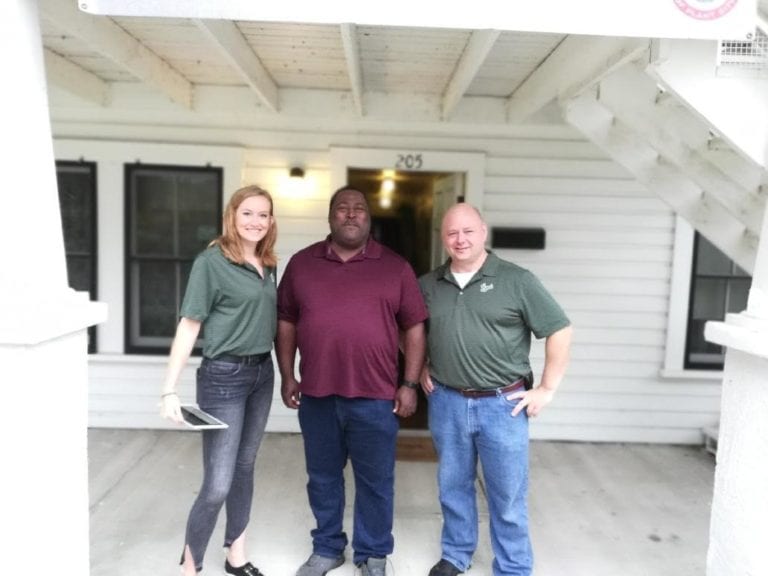
The Institute for Digital Exploration at the University of South Florida came out to the Bing Rooming House Museum to digitally document in 3D the historic site.
Throughout history archeologists and historians have had to use context clues and scraps of evidence to recreate the past. Now, researchers are using virtual technology to preserve and reconstruct historic locations all over the world.

The Institute for Digital Exploration at the University of South Florida selected the Bing Rooming House Museum as one of the sites it wished to preserve via its state-of-the-art technology. On Feb. 18 a team from USF drove over to Plant City to get to work scanning every square inch of the beloved landmark.
“The process is pretty much we take 360-degree scans, the laser collects the geometry of the room so we have an exact digital replica of the space we are capturing, so that it’s spatially accurate,” Rebekah McLaughlin, graduate research assistant for the USF department of history, said. “Then we have a series of photos the scanner takes all in color so the color is overlaid with the geometry in order to have a complete visual representation of how the room is when we’re there.”
IDEx learned about Bing because Dr. Michael Decker, a professor for the department of history at USF, lives here in Plant City. Having trekked all across the state to document Florida’s immense history, he knew the museum was a perfect candidate for the visit.
While there the team did run into a minor issue with their scanner so they’ll be back in a few weeks to finish the scan. A complete digital walkthrough of the entire building will be available in three or four days after they finish at the site thanks the assistance of some high-powered computers.
“The importance of that for just the general population who are not using it for research purposes or restoration purposes is it provides a way for people to see sites they may not be able to access, that may be outside of Florida or if even another Hurricane happens or anything like that it can protect them digitally,” McLaughlin said.
It’s a concept that is taking education by storm. Even students at Knights Elementary here in Plant City find themselves going on virtual field trips in their classrooms thanks to the school’s new technology.
Students are led on “trips” to a variety of historical and international locations via the guidance of their teachers who navigate on a tablet. They’ve even floated up to the International Space Station on one trip and the students turn all 360 degrees to explore space.
While places like Bing are easy for local students to access, having a virtual tour means anyone in the world will soon be able to “walk” through its doors.
“We’re really hoping we can both promote the Bing House itself and help them however they need for marketing or anything like that in addition to preserving a site that is really important for the history of Florida,” McLaughlin.
IDEx works all over the globe doing a variety of projects based on different needs. In Sicily they are actively scanning sites few have ever even heard of. Some are seventh, eighth and ninth-century while others are Medieval. The sites are small, but their importance to history is immense. McLaughlin said the teams often bounce back and forth between doing more archeological projects to fighting against the clock with preservation scans.
In Sarasota the team worked at a site at the Ringling Museum. The damage from Hurricane Irma impacted the sprawling campus and the group documented some of the location in depth. If they ever need to do future restoration projects the museum will now be able to pull up a detailed canvas of how it originally looked.
Last week was the program’s first step into Plant City, but after having talked with William Thomas Jr., president of the Improvement League of Plant City, while at the Bing House McLaughlin said there is a chance many more local historic locations may soon be chosen by the program for its virtual documentation.
